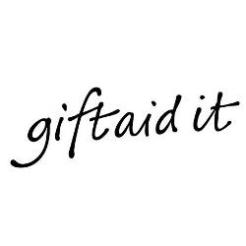The proportion of UK charities reporting no income from gift aid increased eight percentage points to 50 per cent this year, according to the 2014 State of the Not-for-Profit Industry report.
But while fewer charities were receiving gift aid, the amounts being claimed increased as gift aid accounted for 6 per cent of total income for UK respondents to the survey, which was up from 4 per cent from 2013.
The report, produced annually by the fundraising software company Blackbaud, surveyed 219 charity professionals working for organisations in the UK and 204 in Ireland.
Last year's SONI report found 42 per cent of the UK charities surveyed did not claim gift aid.
Last October, HM Revenue & Customs introduced Charities Online, the new digital claims system for gift aid that aims to make it quicker and easier for charities to claim the tax-effective giving incentive.
But Jerome Moisan, managing director of Blackbaud Europe, said the changes could be putting some charities off claiming, which would account for the increase in charities reporting no income from gift aid in the latest SONI report.
“It’s far from ideal that more not-for-profits are not reporting income from gift aid, as it is effectively lost revenue,” he said. “The changes put in place last year by HMRC to allow for easier processing of gift aid claims do not seem to have filtered through and perhaps has even put some NFPs off. This is something that NFPs of all sizes need to be mindful of.”
The new system offers three ways to claim: a spreadsheet option, a database option and a new, more basic paper form, which replace the old R68i form. As charities were transitioning to the new system last year, there were reports that major charities were struggling with their software suppliers and that small charities might be put off registering.
According to the SONI report, 43 per cent of respondents use a fundraising/donor management system to process their claims, while 10 per cent use a specialist gift aid system, 20 per cent use an accounting system, and 24 per cent use spreadsheets.
The report says that the percentage of individual donations that included gift aid claims varied, but nearly four in ten charities estimated that a majority (60 per cent or more) of donations included gift aid claims.
Peer-to-peer proving popular
The report also shows that peer-to-peer fundraising, where supporters raise funds on behalf of their chosen charity, for example through challenge events, is increasing. Some 69 per cent of respondents said they had received donations from this method, up from 60 per cent in 2013 and 38 per cent in 2012.
Charities receiving such donations were also using social media and online giving tools, with 75 per cent of those respondents that received peer-to-peer donations also accepting digital donations and 84 per cent using at least one social media platform to communicate with supporters.
The report shows that social media use by charities grew 16 percentage points to 96 per cent this year.
But respondents felt they were struggling to use social media effectively, the report says, with more than 60 per cent rating themselves lower than seven out of 10 on a scale of effectiveness.
The survey shows that on average, 15 per cent of all private giving is from online donations, and almost half of the charities surveyed use text-giving, with 22 per cent saying they planned to do so over the next year.
Moisan said: “The importance of peer-to-peer fundraising cannot be underestimated, and social media is one of the main channels for supporters to ask others for donations.
“But NFPs on the whole feel that they aren’t using social media as effectively as they could. Is this true or is it actually a case of having unrealistic expectations about what social media can achieve? Either way, NFPs are taking it seriously with 62 per cent adding staff or responsibilities that focused on social media during the past year.”








